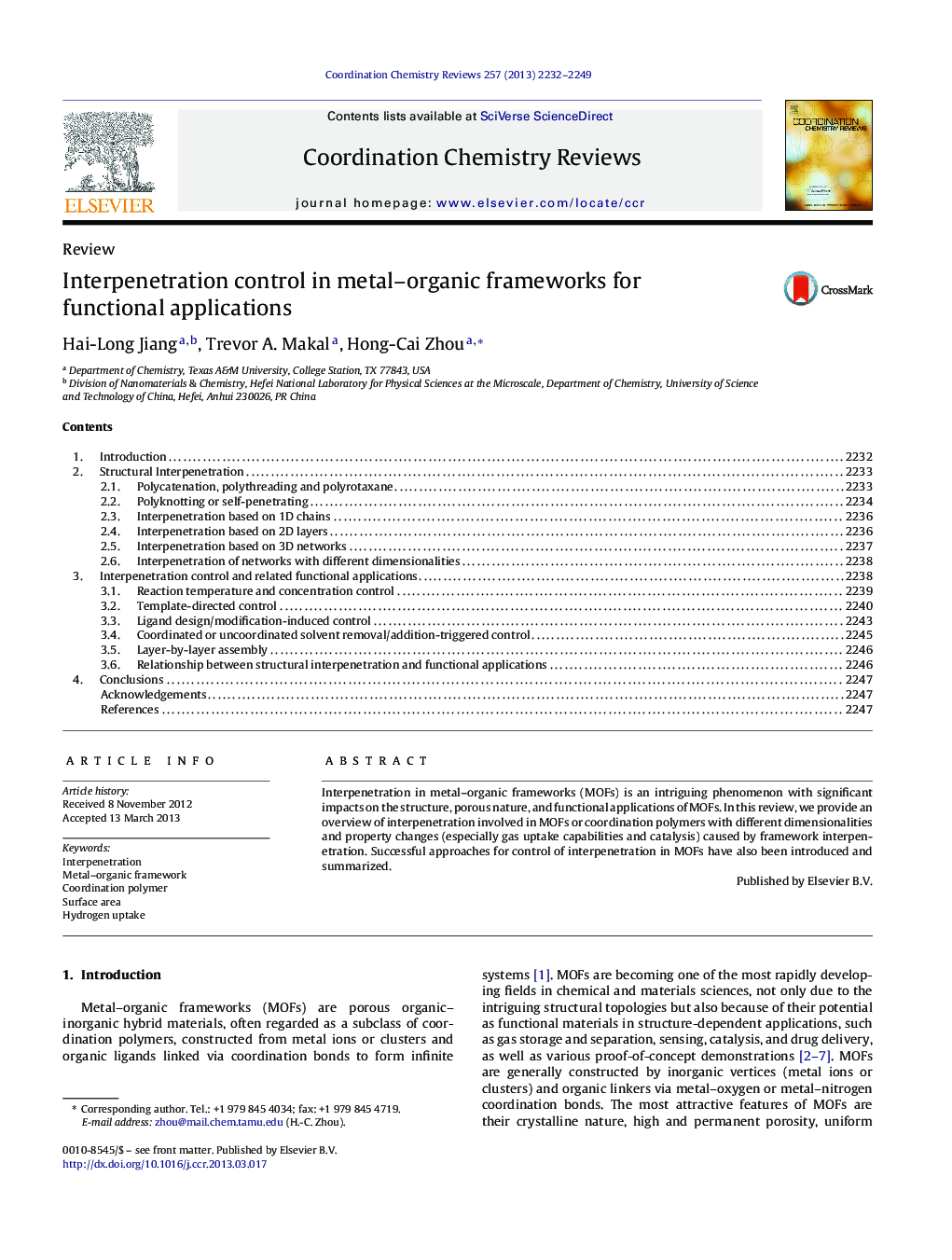| Article ID | Journal | Published Year | Pages | File Type |
|---|---|---|---|---|
| 1299593 | Coordination Chemistry Reviews | 2013 | 18 Pages |
•Polycatenation, polythreading, polyrotaxanes, polyknotting and self-penetrating involved in MOF structures have been reviewed.•Structural interpenetration in MOFs has been presented based on the dimension of single interpenetrating units (0D, 1D chain, 2D layer or 3D network).•Successful strategies for interpenetration control to achieve interpenetration isomers and noninterpenetrated frameworks have been introduced.•Highlights the differences in functional applications (esp. gas adsorption and catalysis) between MOF pairs with interpenetrated and noninterpenetrated structures.
Interpenetration in metal–organic frameworks (MOFs) is an intriguing phenomenon with significant impacts on the structure, porous nature, and functional applications of MOFs. In this review, we provide an overview of interpenetration involved in MOFs or coordination polymers with different dimensionalities and property changes (especially gas uptake capabilities and catalysis) caused by framework interpenetration. Successful approaches for control of interpenetration in MOFs have also been introduced and summarized.
Graphical abstractFigure optionsDownload full-size imageDownload high-quality image (171 K)Download as PowerPoint slide
